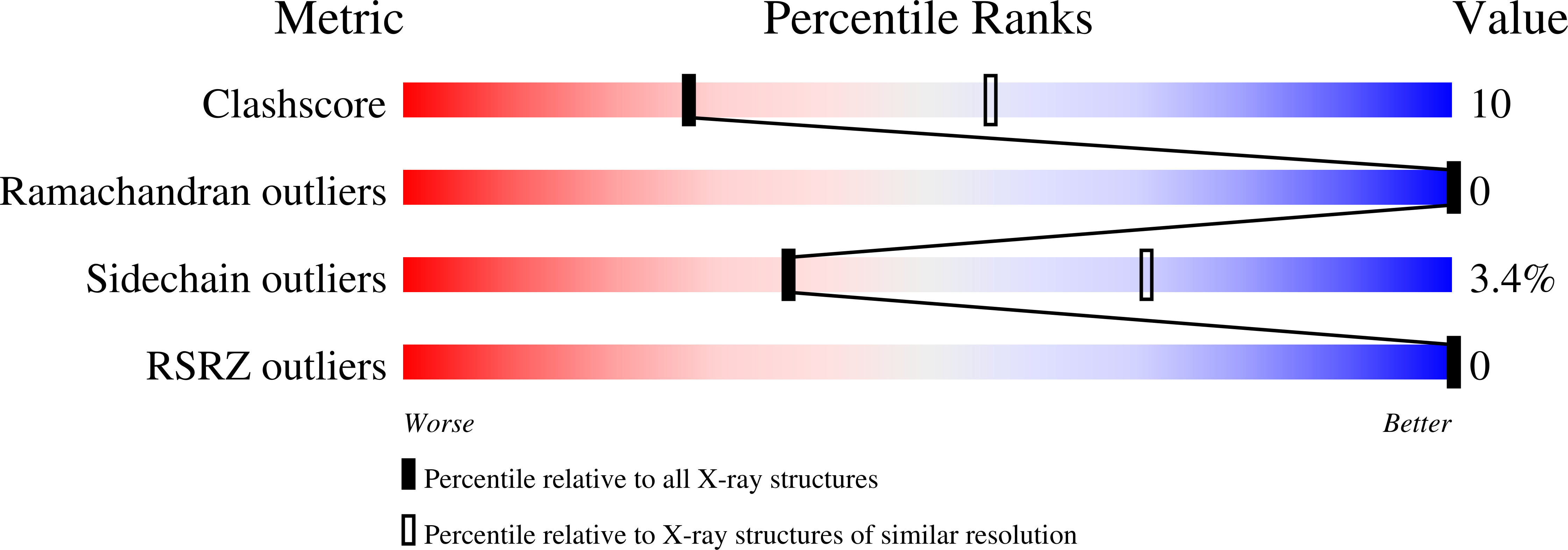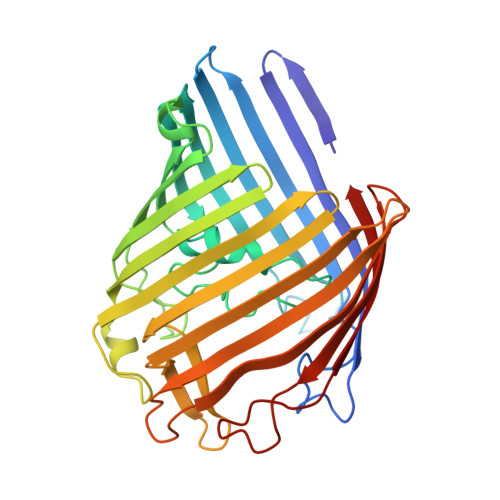Structural and functional characterization of OmpF porin mutants selected for larger pore size. I. Crystallographic analysis.
Lou, K.L., Saint, N., Prilipov, A., Rummel, G., Benson, S.A., Rosenbusch, J.P., Schirmer, T.(1996) J Biol Chem 271: 20669-20675
- PubMed: 8702816
- Primary Citation of Related Structures:
1GFM, 1GFN, 1GFO, 1GFP, 1GFQ - PubMed Abstract:
OmpF porin is a nonspecific pore protein from the outer membrane of Escherichia coli. Previously, a set of mutants was selected that allow the passage of long maltodextrins that do not translocate through the wild-type pore. Here, we describe the crystal structures of four point mutants and one deletion mutant from this set; their functional characterization is reported in the accompanying paper (Saint, N., Lou, K.-L., Widmer, C., Luckey, M., Schirmer, T., Rosenbusch, J. P. (1996) J. Biol. Chem. 271, 20676-20680). All mutations have a local effect on the structure of the pore constriction and result in a larger pore cross-section. Substitution of each of the three closely packed arginine residues at the pore constriction (Arg-42, Arg-82, and Arg-132) by shorter uncharged residues causes rearrangement of the adjacent basic residues. This demonstrates mutual stabilization of these residues in the wild-type porin. Deletion of six residues from the internal loop (Delta109-114) results in disorder of seven adjacent residues but does not alter the structure of the beta-barrel framework. Thus, the large hollow beta-barrel motif can be regarded as an autonomous structure.
Organizational Affiliation:
Department of Structural Biology, Biozentrum, University of Basel, Klingelbergstrasse 70, CH-4056 Basel, Switzerland.















